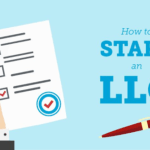The world of web development is vast, dynamic, and constantly evolving. For beginners stepping into this field, one of the biggest questions is: Should I become a Front-End, Back-End, or Full Stack Developer? Each path offers unique challenges, skills, and career opportunities. Your choice should depend on your interests, strengths, and long-term career goals.
This comprehensive guide will take you deep into each of these roles — exploring their responsibilities, required technologies, and the type of individuals best suited for each path.
1. The Three Core Pillars of Web Development
Every modern website or web application is built upon three key pillars:
- Front-End: The part users see and interact with (Client-Side).
- Back-End: The part that operates behind the scenes (Server-Side).
Full Stack: The combination of both Front-End and Back-End, handled by one professional.
A Full Stack Developer bridges the gap between design and functionality, ensuring a complete, seamless web experience.
2. Front-End Development — The Art of User Experience
A Front-End Developer focuses on everything you see on a website — buttons, images, navigation menus, layouts, and animations. Their main goal is to make sure the website is responsive (works perfectly on all devices) and user-friendly (easy to navigate and interact with).
🎨 Goals and Responsibilities
- User Interface (UI) Development: Transforming design mockups (from tools like Figma or Sketch) into real, interactive web pages.
- User Experience (UX) Optimization: Ensuring fast loading times and smooth functionality.
- Responsiveness: Making sure the design adapts well to all screen sizes.
- Interactive Features: Adding animations, transitions, and validation using JavaScript.
💻 Essential Tech Stack
- HTML: The skeleton or structure of web content.
- CSS: Styles and layouts that make content visually appealing.
- JavaScript: Adds interactivity and behavior to websites.
- Frameworks: React, Angular, and Vue.js are highly in demand.
- Tools: CSS preprocessors (Sass/Less) and frameworks (Bootstrap, Tailwind CSS) for faster, cleaner styling.
✨ Who Should Choose Front-End Development?
If you love design, creativity, and problem-solving, and enjoy crafting experiences people directly interact with, then Front-End development is a great fit. It’s ideal for those with a visual mindset and an eye for detail.
3. Back-End Development — The Power Behind the Scenes
A Back-End Developer is the engine of every web application. They handle all the unseen logic that powers the site. Whenever a user logs in, submits a form, or completes a purchase — it’s the Back-End that makes it all happen.
⚙️ Goals and Responsibilities
- Server Logic: Writing code that determines how data is processed on the server.
- Database Management: Storing, retrieving, and managing large volumes of data efficiently.
- API Development: Creating communication channels between the Front-End and Back-End.
- Security & Authentication: Protecting user data and managing secure access.
💾 Essential Tech Stack
- Programming Languages: Python (Django/Flask), JavaScript (Node.js/Express), PHP (Laravel), Ruby (Rails), or Java (Spring).
- Databases: MySQL, PostgreSQL (Relational) or MongoDB, Redis (Non-Relational).
- Version Control: Git, GitHub, or GitLab for managing code.
- Server & Deployment Tools: Linux basics, Docker, AWS, and CI/CD pipelines.
🧠 Who Should Choose Back-End Development?
If you enjoy logic, data management, and building systems that run smoothly and securely, Back-End development might be your path. It’s perfect for people who prefer problem-solving and working on the technical foundation rather than visuals.
4. Full Stack Development — The Complete Package
A Full Stack Developer is proficient in both Front-End and Back-End technologies. They understand the entire development process — from designing the user interface to managing servers and databases.
🚀 Goals and Responsibilities
- End-to-End Development: Handling all stages of a project — from planning and coding to deployment.
- System Architecture: Designing and structuring the complete application.
- Team Communication: Acting as a bridge between Front-End and Back-End teams for smoother collaboration.
- Problem Solving: Being flexible enough to fix issues across the entire development stack.
🧩 Essential Tech Stack
A Full Stack Developer combines both worlds:
- Front-End: HTML, CSS, JavaScript, React/Vue/Angular.
- Back-End: Node.js, Python, PHP, or Java.
- Databases: MySQL, MongoDB, or PostgreSQL.
- Deployment: Docker, Git, and cloud platforms like AWS or Heroku.
🌟 Who Should Choose Full Stack Development?
If you love learning and want a versatile career, Full Stack development gives you the best of both sides. You’ll be able to build complete applications independently — a valuable skill in startups and freelancing.
5. Choosing the Right Path for You
Here are a few questions to help you decide your direction:
- Do you enjoy design and visuals? → Go for Front-End.
- Do you prefer logic, databases, and problem-solving? → Choose Back-End.
- Do you like working on both sides and building full systems? → Become a Full Stack Developer.
Each path offers a rewarding and high-demand career. The key is to start learning, practice consistently, and build real-world projects to strengthen your portfolio.
Final Thoughts
Web development is one of the most exciting and rapidly growing fields in the tech world. Whether you decide to specialize in Front-End, Back-End, or master both as a Full Stack Developer, remember — every great website is a combination of creativity, logic, and innovation.
Your journey might start with one skill, but with dedication and curiosity, you can evolve into a well-rounded web professional ready to shape the digital future.



